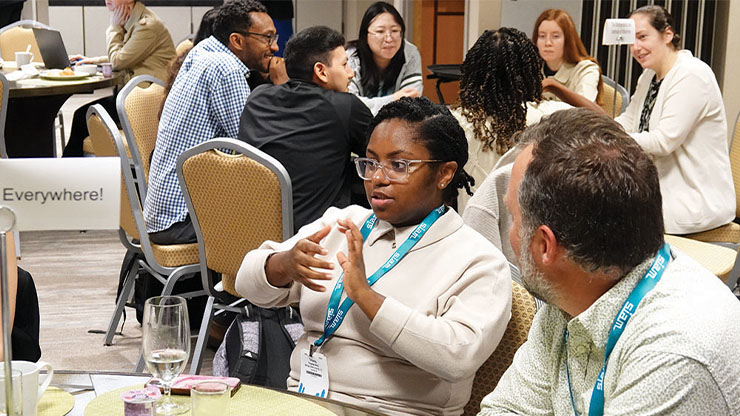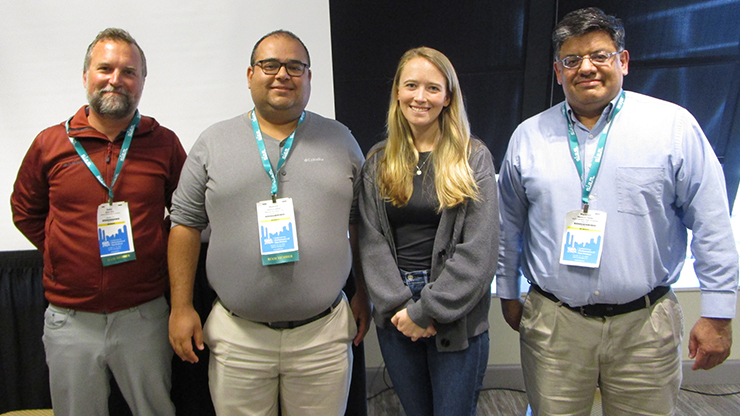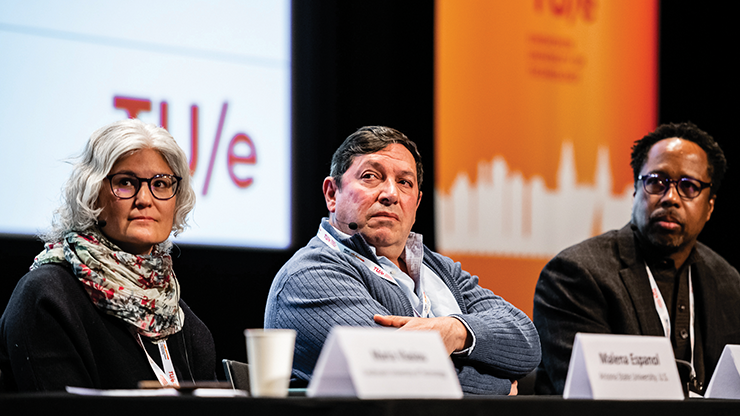Inclusive Team-based Research in Computational Science and Engineering
In recent years, computational science and engineering (CSE) has emerged as the widely accepted third pillar of scientific inquiry. Many significant advances in science, technology, engineering, and mathematics (STEM) rely on CSE and are powered by progressively large computers, sophisticated algorithms, and innovative field experiments. “What started out as a new way to do discovery has turned into a critical aspect of any scientific research,” Mary Ann Leung of the Sustainable Horizons Institute (SHI) said. “High-performance computing has given us increasing capabilities, and nowadays artificial intelligence is marking another huge paradigm shift.”
This type of headway necessitates a highly skilled, multidisciplinary workforce with experience in computational science, applied mathematics, computer science, software engineering, and related fields. Yet in the last decade, several reports have identified workforce development and recruitment challenges in U.S. government agencies and other sectors. For instance, a 2014 letter by the Department of Energy’s (DOE) Advanced Scientific Advisory Committee called for more effective techniques to attract a full spectrum of talent [2]. Part of the issue stems from heightened competition between academia, industry, and the national laboratories. In fact, the ASCR@40 report noted that “[c]omputationally trained scientists have vastly more opportunities in industry and academia than they did a generation ago, which increases competition for the ‘best and the brightest’” [1]. “There are so many opportunities for people who have these skills, so it makes it even harder to recruit them,” Leung said. “We’re at a critical place, a crisis where we just don’t have enough people to get the work done.”
This newfound sense of competition and the growing need for multidisciplinary employees—coupled with changing demographics within the U.S. CSE workforce—collectively constitute an overconstrained problem. During the 2025 SIAM Conference on Computational Science and Engineering (CSE25), which is currently taking place in Fort Worth, Texas, Leung spoke about the value of an inclusive, team-based workforce and proposed solutions for recruitment and retention. She began with a brief overview of related history in the context of the well-known leaky pipeline. “You start out with lots of people who are interested in STEM careers, but along the way they fall out,” Leung said, referencing attrition rates in higher education. Some of this gradual loss is due to gatekeeper courses: entry-level college courses that discourage and eliminate students rather than attract them.

For many years, the focus thus remained on amending college curricula and culture through tutoring, remedial courses, and other student interventions. “That model was great, but it assumes that something is wrong with the student and we need to fix it,” Leung said. “It’s what we call a deficit model.” Another solution was the proliferation of identity-based programs and activities to generate a sense of belonging, such as Girls in STEM and Girls Who Code. “While people are in these single-based identity groups, they develop much more self-esteem and confidence,” Leung continued. “But once they got out of those groups, they lost it and had a lot of difficulty integrating into professional societies.”
Instead of relying on these previous remedies, Leung advocates for the cultivation of teams that comprise individuals with varied backgrounds and experiences. Indeed, research shows that such collaborations are more innovative. “Science is a team sport,” she said. “When everyone is from the same school of thought, they’re going to continue along that pathway. But when you have people that come from different communities and backgrounds, they’re going to have different ways to think about and do things.”
Because existing literature indicates that programs that embrace a variety of techniques are most effective, SHI developed an intervention model that combines six aspects of community building: academic/technical (i.e., preparation for the rigors of science), psychosocial support (i.e., a healthy relationship with scientific culture), mentoring, careers, professional development (i.e., nontechnical soft skills), and leadership (see Figure 1). “We try to have something in our programming from every one of these components,” Leung said. “We try to help people feel like they’re part of something that is giving them a sense of belonging.”
Many of SHI’s efforts seek to ensure that certain identity groups are not isolated from the mainstream setting, which includes conventional work environments and professional events like CSE25. To encourage recruitment and retention in CSE, Leung introduced the institute’s portfolio of programs—part of its so-called “career superhighway”—that target four aspects of the workforce pipeline: the early academic on-ramp; internships and training; graduate school; and careers.
The “on-ramp” portion of the imaginary highway is meant to engage with students who have a budding interest in STEM. SHI does so through its Computational Research Leadership Council (CRLC) Seminar Series: a collaborative initiative with six DOE laboratories that provides virtual seminars to academic institutions. “A lot of students have never heard of DOE labs,” Leung said. “It’s raising awareness and creating that first entry point for people.” In a similar vein, SHI’s Introduction to High-Performance Computing Bootcamp—a joint program with three DOE national labs—allows STEM students to gain hands-on, immersive experience with data science while addressing issues that pertain to social good. Topics include climate risk, solar power, sustainable cities, and energy usage. Additionally, Trusted Cyberinfrastructure partners with cyberinfrastructure operators to build and maintain cybersecurity programs; provide training and resources; and expose students to the technology, processes, and tools that will shape the next generation of scientific research.

After securing student interest in STEM, the next step is to cultivate that interest via internships and training. Sustainable Research Pathways is a comprehensive workforce development experience that matches student or faculty-student teams with DOE scientists to conduct summer research (see Figure 2). The program began at Lawrence Berkeley National Laboratory in 2014 and has since expanded through the DOE’s Exascale Computing Project and beyond. As students enter graduate school and prepare for their future careers, they can then partake in SHI’s Building Engagement (BE) Program. BE provides funding for participants to attend conferences like CSE25 and hosts special activities throughout the conference week to foster a strong community of like-minded peers. Finally, SHI also works with the Better Scientific Software Fellowship Program, which provides recognition and funding to leaders/advocates of high-quality scientific software and promotes practices, processes, and tools that improve software productivity and sustainability.
Leung concluded her presentation by reminding the audience to think broadly and openly in order to stimulate a sense of belonging and community amongst the next generation of research scientists. “Focus on the ecosystem rather than the individual,” she said. “It’s important to meet people where they are, rather than where you are. We want to create an environment that is for everyone.”
References
[1] Bland, B., Chen, J., Colella, P., Dart, E., Dongarra, J., Dunning, T., … Vetter, J. (2020). ASCR@40: Highlights and impacts of ASCR’s programs. Advanced Scientific Computing Advisory Committee. Retrieved from https://computing.llnl.gov/misc/ASCR@40-11.2020.pdf.
[2] Chapman, B., Henri, C., Silvia, C., Dongarra, J., Hittinger, J., Lathrop, S.A., … Williams, D. (2014). DOE Advanced Scientific Advisory Committee (ASCAC): Workforce Subcommittee letter. U.S. Department of Energy Office of Scientific and Technical Information. Retrieved from https://www.osti.gov/biblio/1222711.
About the Author
Lina Sorg
Managing editor, SIAM News
Lina Sorg is the managing editor of SIAM News.

Stay Up-to-Date with Email Alerts
Sign up for our monthly newsletter and emails about other topics of your choosing.






